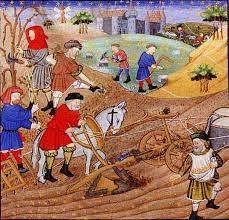Silver created inflation across Europe during the 16th and 17th centuries, reshaping economies and societies in profound ways. As vast quantities of silver flowed in from the mines of the Americas, the sudden increase in money supply caused prices to rise sharply, a phenomenon known as the Price Revolution. This prolonged inflation disrupted traditional feudal economies, eroding the wealth of landowners reliant on fixed rents and plunging peasants into economic hardship. At the same time, it spurred the growth of urban centers, empowered merchants, and accelerated the transition toward capitalism. This post explores how the abundance of silver triggered inflation, destabilized the old order, and laid the groundwork for Europe’s economic transformation.

How Silver Triggered Inflation
- A Rapidly Expanding Money Supply:
- The vast quantities of silver mined from Potosí (Bolivia) and Zacatecas (Mexico) flooded European markets.
- As the money supply increased dramatically, the value of silver coins declined, and the prices of goods began to rise across the continent.
- The “Quantity Theory of Money”:
- The basic economic principle that more money in circulation leads to higher prices was evident during this period.
- The abundance of silver devalued currency, leading to a rise in the cost of essential goods such as grain, textiles, and livestock.
- Prolonged Inflation:
- Prices of goods in Europe increased by as much as 400% over the course of a century, making it one of the longest sustained periods of inflation in pre-modern history.
Disruption of Feudal Economies
- Decline of the Manorial System:
- Under feudalism, landowners received rents and services from peasants, often paid in kind (e.g., grain, livestock).
- As prices rose, these traditional payments lost their value, forcing landowners to demand cash rents instead.
- Peasant Hardships:
- Peasants struggled to pay rents in silver or purchase goods at inflated prices, leading to widespread poverty and economic instability in rural areas.
- Many were forced off their land, creating a growing population of landless laborers who migrated to cities in search of work.
- Urbanization and Wage Stagnation:
- Cities grew rapidly as displaced rural workers sought jobs, but urban wages failed to keep up with inflation.
- The gap between the wealthy merchant class and the struggling urban poor widened, exacerbating economic inequality.
Winners and Losers of the Price Revolution
- Winners:
- Merchants and Traders: Those engaged in trade, particularly in goods that were in high demand, benefitted from rising prices.
- Landowners with Cash Crops: Landowners who shifted to commercial agriculture and sold products like wool or grain for cash profited handsomely.
- Banks and Financiers: The rise of inflation and a cash economy boosted the importance of banking institutions, which thrived during this period.
- Losers:
- Wage Laborers: As prices rose and wages stagnated, workers found it increasingly difficult to afford basic necessities.
- Traditional Feudal Lords: Those reliant on fixed rents or payments in kind saw their wealth eroded by inflation.
- Peasants and Small Farmers: The rural poor, unable to adapt to the cash economy, bore the brunt of rising costs and declining agricultural yields.
Acceleration of Capitalism and Market Economies
- Shift from Feudalism to Commercial Agriculture:
- Many landowners transitioned to market-oriented farming, producing goods like wool and grain for sale rather than subsistence.
- The commercialization of agriculture laid the groundwork for modern capitalist economies.
- Rise of the Merchant Class:
- The growing demand for goods and the expansion of trade networks empowered merchants, who became increasingly influential in shaping European economies.
- Cities like Antwerp and Amsterdam thrived as centers of trade, banking, and commerce.
- Development of Banking and Credit:
- Inflation encouraged the growth of financial institutions to manage the increasing complexity of monetary transactions.
- The establishment of banks, such as the Bank of Amsterdam, was instrumental in facilitating international trade and capital flows.
Social and Political Consequences
- Economic Inequality and Unrest:
- The Price Revolution widened the gap between the rich and poor, creating resentment and unrest among the lower classes.
- Peasant uprisings, such as the German Peasants’ War (1524–1525), were fueled in part by the economic pressures of inflation.
- Government Struggles:
- Many European monarchies faced fiscal challenges as the real value of tax revenues declined, forcing them to seek new sources of income through tariffs, loans, and colonial ventures.
- The growing financial strain contributed to political instability and conflict, such as the Thirty Years’ War (1618–1648).
Conclusion: The Economic Transformation of Europe
The abundance of silver from the Americas disrupted Europe’s feudal economies and set the stage for profound economic and social changes. Inflation eroded traditional structures, hastened the decline of feudalism, and spurred the rise of capitalism and market economies. While merchants and landowners prospered, wage laborers and peasants faced increased hardships, fueling social unrest and inequality. The Price Revolution was a pivotal moment in European history, reflecting both the opportunities and dangers of a rapidly expanding global economy.
